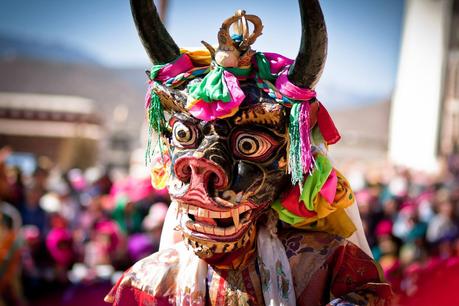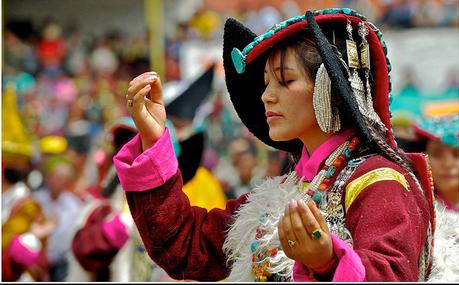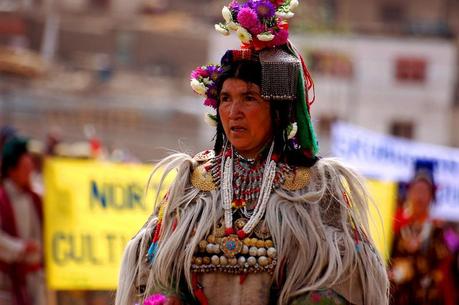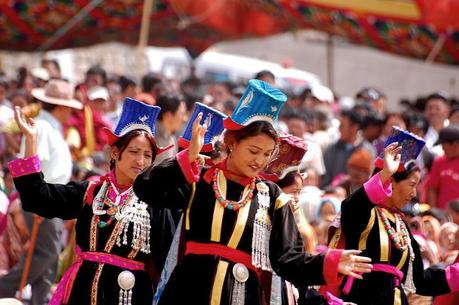Since Ladakh is a part of strategically important Jammu and Kashmir, the Indian military maintains a strong presence in the region. The largest town in Ladakh is Leh followed by Kargil. Almost half of Ladakhis are Shia Muslims and the rest are mostly Tibetan Buddhists. Ladakhi culture is heavily influenced by Tibetan culture, in fact it is quite similar. There are more Buddhists than Muslims in certain areas and the ratio changes as we move towards Zanskar valley.

Ladakhi food has much in common with Tibetan food, the most prominent foods being thukpa (noodle soup) and tsampa, known in Ladakhi as ngampe (roasted barley flour).The architecture in Ladakh draw heavy influences from Tibet and India. Along the long established trade routes through Tibet, Central Asia, Kashmir and the plains of northern India, came not only goods but also ideas.

Despite its harsh terrain and remoteness from urban centres, Ladakh has long been a location where people, commerce and cultures intermingled and its art forms therefore reflect influences from many other places. Records and monographs left by European travelers – the first Europeans to reach Leh in 1631were the Portuguese priests Francisco de Azevedo and John de Oliveira. Then in 1820 the two Englishmen William Moorcroft and George Trebeck, who worked for the East India Company – they had come to Ladakh in the course of a journey to central Asia in search of horses for the East India Co – were kept in Leh for two years waiting for permission to go to Yarkand, and which was eventually denied them.

These chants are complex, often recitations of sacred texts in celebration of various festivals. People of Ladakh are very different in looks from the rest of the country. Due to the altitude of the place, their skin is very hard and tough with soft and plain nature by heart. Their face round shape, small eyes and nose give them different look from the rest of the world people. Their clothes and appearance are more alike to the Asian and Tibetan people. In between the 4th and 5th century, Dards migrate towards the Himalayan region and settle down there.

It was during this two-year wait that they observed and wrote about life in Ladakh, trade, clothes, religion, etc.The monastic architecture reflects a deeply rooted Buddhist approach. The Buddhist wheel, along with two dragons, is a common feature on almost every gimp, including the likes of Hemis, Thiksey, Alchi etc. Ladakhi Buddhist festival music is much like its Tibetian counterpart and often involves religious chanting.These Dards are said to be from the Indo – Aryan race. Many people from this origin convert themselves in the Islam religion where as some remain with the Buddhist religion. If not for its cold desert like climate, Ladakh would have been all the more accessible to tourists. Ladakh’s climate is a little extreme – the summers can get a little harsh with direct sunlight falling at such a high altitude and winters can be really cold, with temperatures dropping below freezing point.
* Information on the traditional uses and properties of herbs/ animals/ yoga/ places are provided on this site is for educational use only, and is not intended as medical advice. all image credit goes to their Photographers.
